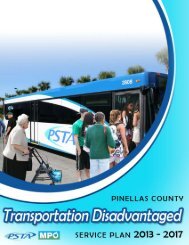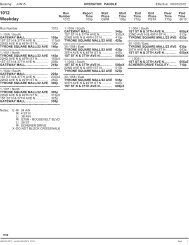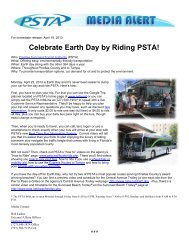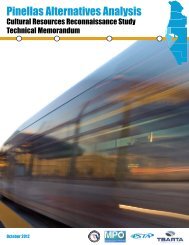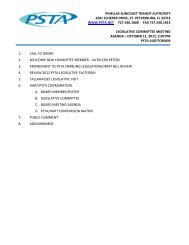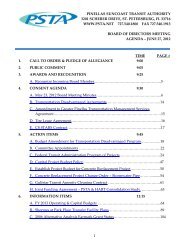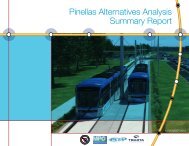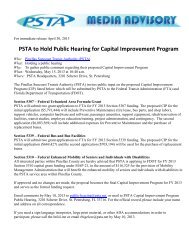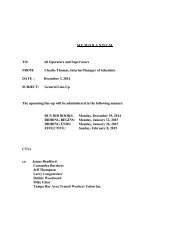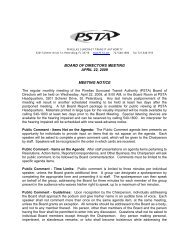DRAFT
FY 2020 - PSTA
FY 2020 - PSTA
- No tags were found...
Create successful ePaper yourself
Turn your PDF publications into a flip-book with our unique Google optimized e-Paper software.
Implications – PSTA continues to emphasize technology implementation and “green” initiatives inorder to enhance customer service and encourage sustainability.RIDERSHIP FORECASTING USING THE TBEST MODELRidership forecasts were prepared using the FDOT-approved transit demand forecasting tool, TransitBoardings Estimation and Simulation Tool (TBEST). TBEST is a comprehensive transit analysis andridership-forecasting model that is capable of simulating travel demand at the individual route level. Thesoftware was designed to provide near- and mid-term forecasts of transit ridership consistent with theneeds of transit operational planning and TDP development. In producing model outputs, TBEST alsoconsiders the following:Transit network connectivity – Refers to the level of connectivity between routes within the busnetwork. The greater the connectivity between bus routes, the more efficient the bus servicebecomes.Spatial and temporal accessibility – Refers to service frequency and to distance between stops.The larger the physical distance between potential bus riders and bus stops the lower the level ofservice utilization. Similarly, less frequent service is perceived as less reliable and in turnutilization decreases.Time-of-day variations – TBEST accommodates peak period travel patterns by rewarding peakservice periods with greater service utilization forecasts.Route competition and route complementarities – TBEST accounts for competition between routes.Routes connecting to the same destinations or anchor points, or that travel on common corridors,experience decreases in service utilization. Conversely, routes that are synchronized and supporteach other in terms of service to major destinations or transfer locations and schedule benefit fromthat complementary relationship.PSTA chose to evaluate future ridership on all routes existing in FY 2009-2010. The following sectionoutlines the model input and assumptions used, includes a description of the TBEST scenario runperformed using the model, and summarizes the ridership forecasts produced by TBEST.Model Inputs/Assumptions and LimitationsTBEST uses various demographic and transit network data as model inputs. The inputs and theassumptions made in modeling the PSTA system in TBEST are presented below. It should be noted,however, that the model is not interactive with roadway network conditions. Therefore, ridership forecastswill not show direct sensitivity to changes in the roadway traffic conditions or speeds.Tindale-Oliver & Associates, IncPinellas Suncoast Transit AuthoritySeptember 2010 6-14 Transit Development Plan




